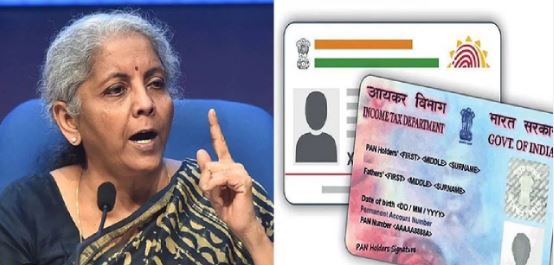PAN Card : Everything You Need to Know
Table of Contents
Introduction:
A PAN (Permanent Account Number) is a 10-digit alphanumeric identifier issued by the Income Tax Department in India, serving as a document for identity verification. Additionally, it is mandatory to provide a PAN Card when opening a bank account or conducting financial transactions. It is akin to the Social Security Number (SSN) issued in the United States.
Section 139A of the Income Tax Act 1961 outlines the necessary provisions. The primary objective behind the issuance of PAN cards by the Government of India is to curb tax evasion. By mandating individuals to provide their numbers during financial transactions, the IT Department can monitor all monetary exchanges to deter tax evasion.
Format of PAN Number:
PAN cards serve as proof of identification and age, complying with Know Your Customer (KYC) regulations. Below are the details typically found on a PAN card:
- The name of the individual or company owning the card.
- Father’s name
- Date of birth (for individuals) or date of registration (for companies).
- PAN Number – It is a unique 10-character combination of letters and numbers that contains specific information about the cardholder.
- The initial three characters are consistently alphabetical (A to Z).
- The fourth letter denotes the taxpayer’s category.
- Below are the various entities along with their corresponding characters:
- A – Association of Persons(AOP)
- B – Body of Individuals(BOP)
- C – Company
- F – Firms
- G – Government
- H – Hindu Undivided Family(HUF)
- L – Local Authority
- J – Artificial Judicial Person
- P – Individual
- T – Association of Persons for a Trust
- The fifth letter in the PAN signifies the first letter of the individual’s surname.
- The subsequent letters and characters are random. The initial four characters are numbers, followed by a single letter.
- The PAN card also features the individual’s signature, which is required for financial transactions.
- It contains the individual’s photograph as visual identification proof, while corporations and firms do not have a photograph on the card.
Types of PAN Cards:
Permanent Account Number (PAN) cards are available in various forms, each designed to serve specific functions as described below:
- PAN cards for businesses and organizations.
- PAN card for Cooperative Society and Trust
- PAN card for Individual taxpayer
- PAN card for partnerships or business units
PAN Card Uses:
- One of the primary functions of a is for tax-related purposes, as individuals are required to mention their PAN when filing income tax returns. The enables the Income Tax Department to monitor all financial transactions conducted by an individual.
- A is required for opening a bank account and applying for a home loan in India, verifying identity for both processes.
- A Permanent Account Number (PAN) card is a prerequisite for GST registration, serving to authenticate the business owner’s identity and ensure that the GST registration process is carried out by the correct individual.
- A Permanent Account Number (PAN) card is also utilized as an identification proof for companies, aiding in the verification of the company’s identity and ensuring that the company is registered with accurate details.
- A Permanent Account Number (PAN) card serves as an identification document for students, facilitating the verification of their identity and ensuring that they are enrolled in the correct institution.
- A Permanent Account Number (PAN) card is mandatory for students who earn an income, enabling them to file income tax returns and ensuring that taxes are paid by the correct individual
- A is necessary for scholarship applications and entrance exams, ensuring accurate identity verification.
- A PAN card is essential for foreign currency exchange, serving as identity verification. It is also utilized as an identification document for various government purposes, ensuring accurate issuance.
- Additionally, a PAN card serves as income proof for students and is required for obtaining an income certificate.
Benefits of a PAN Card:
- Avoid higher TDS deductions on interest income by furnishing your PAN to financial institutions.
- A PAN card is mandatory for identity verification when opening a new bank account.
- Financial transactions exceeding Rs. 50,000 require the submission of PAN details.
- Maintaining comprehensive records of individuals’ financial transactions and tax liabilities is essential for strengthening the system.
- Filing income tax returns is crucial, with a being a necessity.
- Linking your bank account to PAN is essential for claiming tax refunds in case of excessive TDS deductions.
- Obtaining a PAN card is essential when investing in mutual funds, bonds, or stocks.
Documents Required to Apply for PAN Card
- Individuals: Proof of identity (voter ID, Aadhaar card) and address (utility bills, voter ID, bank account statement, etc.)
- Accepted documents for address verification for individuals who are not Indian citizens include an Indian passport, a copy of OCI or PIO issued by the Indian government, a bank statement from the country of residence, an NRE bank statement, and a copy of a VISA issued by an Indian company.
- For Hindu Undivided Family (HUF) applications, an affidavit issued by the Karta containing coparceners’ details (including name, address, and father’s name) as of the application date is required. Additionally, identity proof, address proof, and date of birth proof for the Karta of the HUF are needed, following the same requirements as for individuals.
- For trusts established or registered in India, a copy of the Trust Deed or the Certificate of Registration Number issued by a Charity Commissioner is required for verification.
- For Associations of Persons, submission of a copy of the Agreement/Certificate of Registration Number from the Registrar of Co-operative Society or Charity Commissioner, or any document issued by the Central/State Government indicating the identity and address of the applicant is required.
How to apply for a PAN card online:
- Please visit the official website of NSDL (National Securities Depository Limited).
- Next, choose the application type and select your category.
- Accurately fill out the PAN application form with your details, then click ‘Submit’.
- You will now be issued an acknowledgment number to track your application status.
- Click on ‘Continue with PAN Application Form’ and proceed to fill in all the necessary details.
- Choose your preferred method for document submission: either physically, digitally with a digital signature, or digitally via e-sign.
- Choose ‘Proceed’ to continue with your preferred payment method.
- If you opt to pay via debit card or net banking, you will receive an acknowledgment receipt. However, if you choose to pay via demand draft, you will need to enter the details during the application process.
- Please submit two recent photographs, the acknowledgment receipt, and the supporting documents to NSDL.
Mistakes to Avoid When Applying for a PAN Card:
- A common mistake often made is failing to include all the necessary documents with the PAN card application. To prevent delays or rejection of the application, it is crucial to ensure that all required documents are submitted.
- Incomplete or inaccurate completion of the application form may result in the rejection of the PAN card application. Therefore, it is crucial to meticulously fill in all the required details and thoroughly double-check for accuracy before submitting the application.
- A valid signature meeting government norms is crucial for PAN card applications, as failure to do so may lead to rejection. Not Pan Card Download Furthermore, PAN cards are vital for verifying minors’ identities when applying for passports, ensuring accurate issuance.
Conclusion:
Any tax-paying entity in India, such as NRIs, foreigners, companies, trusts, or NGOs, must possess a PAN card. This card serves as a vital proof of identity and facilitates high-value transactions. Moreover, it enables the entity to file taxes and receive tax refunds efficiently.




